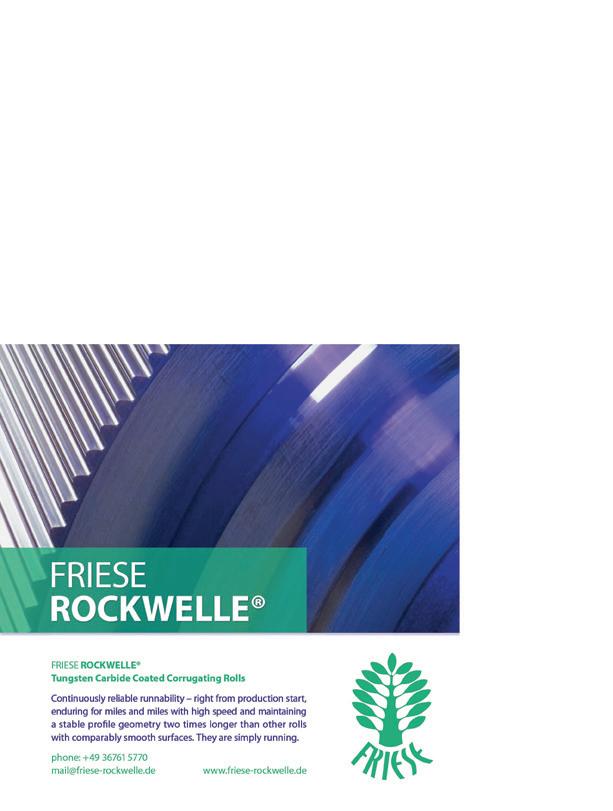
4 minute read
LEADERSHIP
Exploring the Amazon (Packaging Lab)
BY SCOTT ELLIS, ED.D.
Advertisement
In the wake of AICC’s recent E-Commerce Xperience event, readers may be interested in the lessons learned by one of AICC’s leadership advisory groups at Amazon’s packaging laboratory. This group visited the customer packaging experience lab (CPEX) near Seattle in November. Our mentor and tour guide, appropriately named Josh Samples, was refreshingly candid and informative. A synopsis of the lessons learned by the 12 packaging professionals will follow a brief aside about Great-Grandma's ham to acknowledge that brilliant innovators make choices with unintended consequences.
What does Great-Grandma’s ham have in common with an Amazon fulfillment center? First, her recipes were the stuff of legend and were followed to the letter. Why she cut off both ends of the ham was a mystery, but the ham was delicious, so each generation complied. Then 7-year-old Kate asked her mother why this was important, only to be interrupted by ancient Aunt Clara, who announced, “Her pan was too short, dear!” Families and companies have many such unquestioned rules. One such rule at Amazon determines a $1.99-perunit charge for packages that are over 14"x 8"x18" or 20 pounds that require a shipper. These are determined to be unsortable due to the size of their yellow bins, chosen as a standard in all Amazon fulfillment centers. Amazon has two labs: the materials lab and the packaging lab. The materials lab focuses on determining and approving the best materials to be used in its packaging (tape, foam, corrugate, plastic fill, etc.). The packaging lab focuses on determining the best way to ship a product (sizing, protection, etc.). Both labs were started three years ago, and prior to that, Amazon more or less relied on its vendors for any innovation. Amazon is going to be more specific as to what they want and are going to audit their requirements. An explanation of these requirements is available at www.about amazon.com/sustainability/packaging. Another resource is the Amazon Packaging Support and Supplier Network (APASS). CPEX gathers copious customer experience data, including damage, on-box advertising, surprise and delight, and waste.
Amazon has made a commitment to reduce the carbon footprint for 50% of its shipments to zero by 2030. They aspire to have 100% of shipments have zero carbon footprint by 2040. They would like to use more 100% recyclable flexible packages, but 90% are still corrugated. Current efforts are focused on optimizing the oversized boxes, as they cause the most pain right now. When asked if they foresee integration of packaging manufacture into their company, Samples was certain that they would not. He cited their recent focus on integration of freight and last-mile delivery into the model gig economy—a system smilar to the Uber model. He said that it was much more difficult than was anticipated.
During our visit, we saw evidence of the company’s expanded on-box advertising, which adds use of the outer shipper as a billboard in addition to their surprise-and-delight projects that include something to do with the box, such as cutouts for kids to color. Inside print remains important, but they see the outside as more beneficial. In large part, the standard-size shippers are converted by integrated suppliers. Opportunity for independent suppliers will be discussed below. Amazon’s goals for their corrugated suppliers begin with reducing the weight of packaging. They are also concerned about volume. In general, they seem to believe that boxes are overengineered. This is likely due to the shipping methods in play, in that packages are oriented for fit rather than strength.
The main opportunity recognized during the visit was the chance for independent converters to assist their customers in attaining a sizable cost savings. The initiative penalizes those who ship with Amazon when their package is not qualified to ship in its own container (SIOC). Converters can reengineer packaging to achieve SIOC status as verified by an ISTA-6 test. More than 95% of this testing is done by thirdparty labs. Labs can be certified for testing via the APASS network.
Armed with these resources, converters may join the leadership advisory group being equipped to serve our customers in adapting to the e-commerce rules. Independents have a place in the Amazon e-commerce jungle.
Scott Ellis, Ed.D., provides the brutal facts with a kind and actionable delivery when a leader, a team, or a company needs an objective, data-based assessment of the current state of operations and culture. Training, coaching, and resources develop the ability to eliminate obstacles and sustain more effective and profitable results. Working Well exists to get you unstuck and accelerate effective work. He can be reached at 425-985-8508 or scott@workingwell.bz
AD Name of Ad














